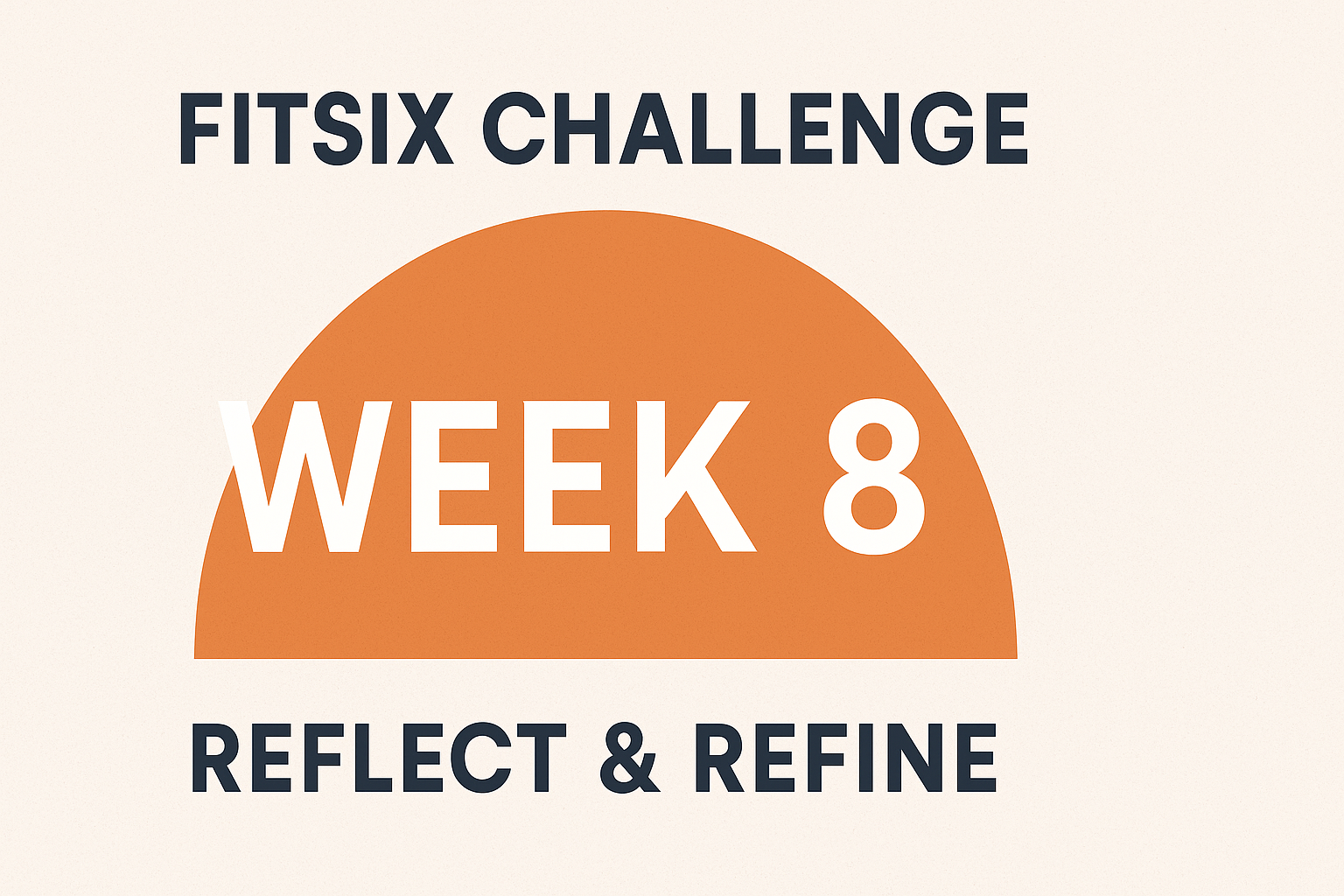William Baier, MS, CSCS, USAW, CFL2
•
September 6, 2025
Why Week 8 Matters
Congratulations—you’ve made it to the two-thirds mark of the FitSix Challenge! Over the past seven weeks, you’ve created consistency, built minimum standards, adjusted your rhythm, fueled with more intention, and tackled energy balance and emotional awareness.
Now it’s time to slow down, reflect on your progress, and refine your approach. This week isn’t about adding more—it’s about identifying what’s working, letting go of what isn’t, and making sure you’re set up to finish strong.
The Focus This Week: Reflect → Refine → Reset
Instead of chasing new goals, use this week to zoom out. Reflection gives you clarity, refinement gives you focus, and resetting helps you realign with your original “why.”
Nutrition: Simple Tweaks, Big Payoffs
- Look back on your eating patterns from the last 7 weeks.
- Where have you been consistent? Where do you feel resistance?
- Make one small adjustment—like moving protein earlier in the day, prepping snacks, or tightening up hydration.
📌 Pro Tip: Don’t try to overhaul everything. Pick one small refinement that clears the most friction.
Training: Audit Your Rhythm
- Are you consistently making your 3+ workouts per week?
- Does your current schedule match your energy levels?
- Add in 1 low-intensity session (walk, yoga, mobility) to support recovery.
Mindset: Reflection Creates Resilience
Ask yourself:
- What’s been my biggest win so far?
- Where have I struggled the most?
- What habit feels strong enough to carry me through the final 4 weeks?
Reflection isn’t about judgment—it’s about awareness.
Action Steps for Week 8
- Review your food, sleep, and training habits from Weeks 1–7.
- Refine your minimum standards—make them harder if they feel too easy, simplify them if they feel too heavy.
- Add a recovery or mobility session this week.
- Complete the checkpoint reflection below.
📌 Checkpoint Reflection: Weeks 1–8
Take 5–10 minutes to write down your answers:
- What’s the single biggest win from the first 8 weeks?
- Where have you faced your biggest challenges?
- What’s one habit or focus you want to carry with you into the final stretch?
The Bottom Line
Week 8 is about pausing, reflecting, and resetting so you can finish strong. Don’t underestimate the power of small refinements—these are the adjustments that make your habits sustainable long after the challenge ends.

